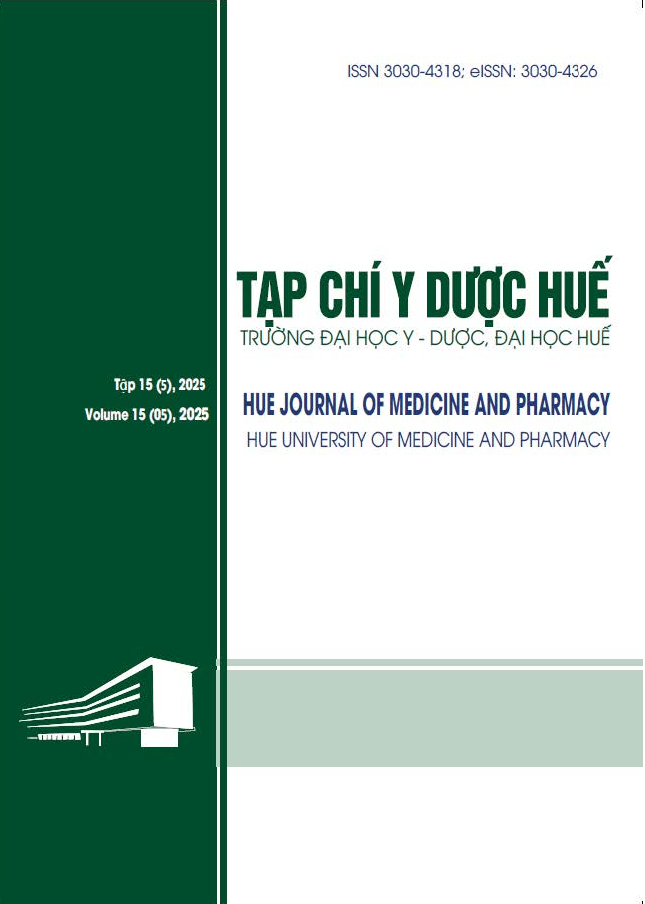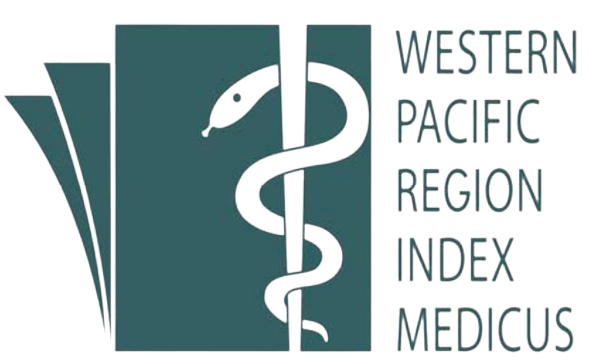Abstract
Background: Vancomycin is an antibiotic with a narrow therapeutic range and needs to be used appropriately to achieve effectiveness and minimize toxicity. Therefore, this study was conducted with the aim of analyzing the current use of vancomycin to enhance its effectiveness at Thanh Thuy District Medical Center.
Materials and methods: Retrospective descriptive study based on data obtained from medical records of adult inpatients (≥ 18 years old) at Thanh Thuy District Medical Center during the period from 01/01/2022 to 31/12/2023 treated with vancomycin intravenously for at least 48 hours.
Results: The median age of 83 patients was 65 years old, men accounted for 74.7%. Patients discharged from the hospital with recovery/improvement accounted for 85.5%. Vancomycin was prescribed empirically in 97.6% of patients. 3,6% of patients were subjected to microbiological culture, of the 2 specimens with positive results, there was 1 patient diagnosed with Staphylococcus aureus. Loading dose regimen was applied in 27.7% of patients while the common maintenance dose was 1 g/24 h (at 70.4%). The percentage of patients experiencing nephrotoxicity was 14.5%.
Conclusion: The study identified a significant proportion of patients who were not administered appropriate loading and maintenance doses based on their renal function. This highlights the need for Thanh Thuy District Medical Center to enhance clinical pharmacists’ support for physicians by developing clear guidelines and implementing blood level monitoring of vancomycin, ultimately promoting individualized treatment approaches.
| Published | 2025-09-30 | |
| Fulltext |
|
|
| Language |
|
|
| Issue | Vol. 15 No. 5 (2025) | |
| Section | Original Articles | |
| DOI | 10.34071/jmp.2025.5.8 | |
| Keywords | Vancomycin, liều duy trì, liều nạp, MRSA, độc tính trên thận Vancomycin, maintenance dose, loading dose, MRSA, nephrotoxicity |

This work is licensed under a Creative Commons Attribution-NonCommercial-NoDerivatives 4.0 International License.
Copyright (c) 2025 Hue Journal of Medicine and Pharmacy
Michael J Rybak, Jennifer Le, Thomas P Lodise, Donald P Levine, John S Bradley, Catherine Liu, et al. Therapeutic monitoring of vancomycin for serious methicillin-resistant Staphylococcus aureus infections: a revised consensus guideline and review by the American Society of Health-System Pharmacists, the Infectious Diseases Society of America, the Pediatric Infectious Diseases Society, and the Society of Infectious Diseases Pharmacists. American Journal of Health System Pharmacy. 2020;77(11): p. 835-864.
Steinkraus, G., R. White, and L. Friedrich. Vancomycin MIC creep in non-vancomycin-intermediate Staphylococcus aureus (VISA), vancomycin-susceptible clinical methicillin-resistant S. aureus (MRSA) blood isolates from 2001-05. J Antimicrob Chemother. 2007; 60(4): p. 788-94.
Chen Iris H. and Nicolau David P. The Sanford guide to antimicrobial therapy. 2020.
Khwaja, A. KDIGO clinical practice guidelines for acute kidney injury. J Nephron Clinical Practice. 2012; 120(4): p. c179-c184.
Lopes, J.A. and S. Jorge. The RIFLE and AKIN classifications for acute kidney injury: a critical and comprehensive review. J Clinical kidney journal. 2013;6(1): p. 8-14.
Vũ Thị Xuân và cộng sự. Phân tích thực trạng sử dụng vancomycin tại Bệnh viện Đa khoa tỉnh Hải Dương. Tạp chí Y Dược Thái Bình. 2023;7: p. 64 - 71.
Van Hal, S.J., T.P. Lodise, and D.L. Paterson. The clinical significance of vancomycin minimum inhibitory concentration in Staphylococcus aureus infections: a systematic review and meta-analysis. Clin Infect Dis. 2012. 54(6): p. 755-71.
Pea, F. Pharmacokinetics and drug metabolism of antibiotics in the elderly. Expert Opin Drug Metab Toxicol. 2018;14(10): p. 1087-1100.
Bộ Y tế. Hướng dẫn sử dụng kháng sinh. Ban hành kèm theo Quyết định số 708/QĐ-BYT ngày 2/3/2015 của Bộ Y tế. 2015.






